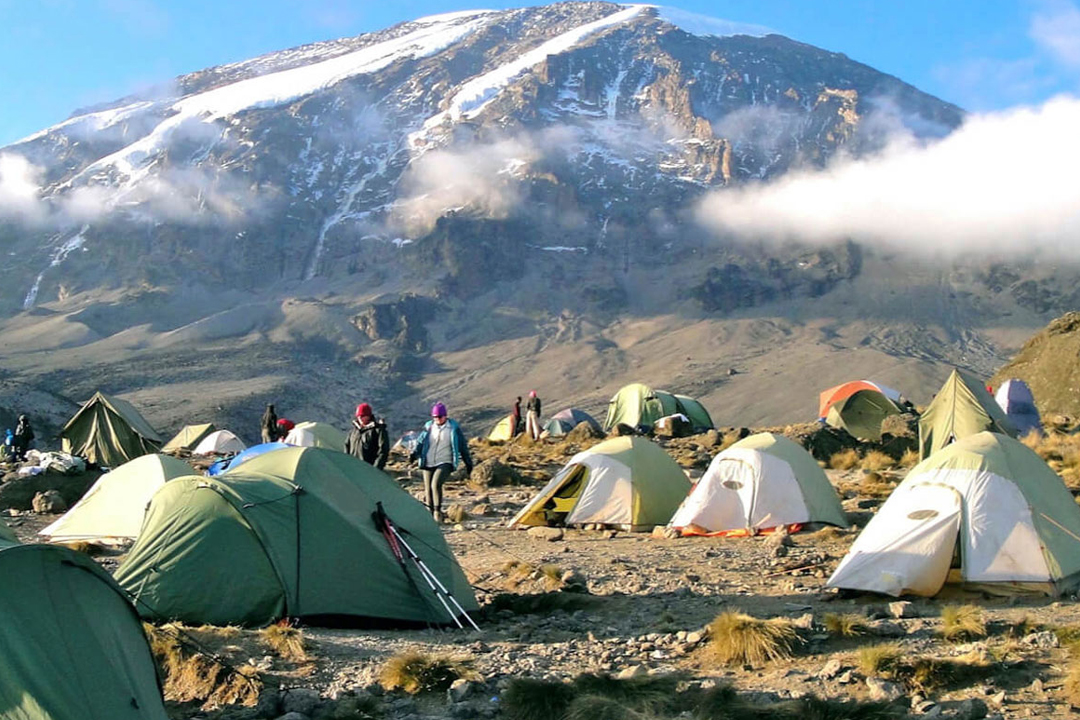Mt Kilimanjaro
Mount Kilimanjaro
Journey Beyond Limits...
It is one of the world’s Seven Summits with 19,341 feet of elevation, three volcanic peaks, five climate zones, and over 140 species living on its slopes. The best part? Safari-goers and trekkers need no technical skill to climb Kili, and you can easily pair a 6–10 day trek with a safari extension.
Climbing Kilimanjaro is an incomparable, life-changing experience. You will probably only do it once, so you need to select the very best partner, Choosing the best time of year to climb Mount Kilimanjaro will determine what sort of experience you have. Don’t worry: our detailed guide will provide you with all the information you need for this important decision!
Best route for your Kilimanjaro climb
On the Mountain
When you’re climbing one of the tallest mountains in the world. You can trust Epicland Kilimanjaro team to get you safely up the mountain.
Best time to hike Kilimajaro
- Best Month December to March
- June to October
Although there are short rainy days during December, it’s still one of the best months to trek. Meanwhile, January and February are the most popular climbing months as the weather is warm, clear and sunny during the day.
In addition, early March is also one of the best times to hike Kilimanjaro. However, it’s not ideal to scale at the end of March as it’s the commencement of the rainy season, and the trails can get very wet, muddy and snowy, giving you poor visibility of the tracks.
Furthermore, April and May aren’t suitable for climbing, so avoid these months as much as possible.
The month of June is the transition period from rainy to dry season. Thus, this month is usually drier than March, April and May. Nonetheless, you’ll still need to prepare for the cold temperatures.
The skies during June are typically cloudy, so you might not get the best views of Kilimanjaro. However, weather conditions are generally colder from July to October but drier compared with the previous months.
Though there’s a chance of getting rained on throughout the year, rainfall is typically low and infrequent from June to October.
Ready to plan your tour? Discover more about the climate zones on Mount Kilimanjaro
Teamwork is everything on Kilimanjaro and you will be part of the Epicland team. Members of our expert mountain crews are all professional, passionate, safety-conscious…and fun!
Mount Kilimanjaro Popular Questions
Frequently Asked Questions
With an altitude of 5,895m, the Mount Kilimanjaro is the Roof of Africa, and the highest freestanding mountain in the word. Every year thousands of people come to Tanzania to climb the Kilimanjaro Mountain, and since last 7 years we offer our guides, assistance and expertise to reach the top of the mountain. We experience and walk on Kilimanjaro every day… and you?
Climbing Kilimanjaro is moderately challenging but achievable for the average person. With a reputable climbing operator and sufficient time for acclimatization, reaching the summit is possible for most people even without prior experience in the mountains.
No specialty mountaineering equipment is needed (i.e. ice axe, crampons, helmet, etc.), and most active guests find they already have some of the items we recommend—hiking boots, base layers, fleece hats and gloves, a fleece sweater, etc. Once you’ve joined a trek, you’ll receive a detailed packing list and rental gear list to help you prepare.
You don’t need to be an athlete or have experience with technical mountaineering, but you do need to be active, committed to training prior to the climb and ready to persevere on the mountain.
Kilimanjaro’s trails are completely nontechnical, but can be very steep at points. Before your trek, we recommend strength training exercises and regular hikes to familiarize your body with the rigors and nuances of trail-hiking.
We can measure each day in walking hours rather than kilometers. Most days, other than the summit day, will begin with breakfast around 6:30 AM and departure at 7 AM. You will walk four to five hours with a break for lunch followed by another hour or two of hiking in the afternoon. These days are not long or difficult and you will be advised to walk slowly.
Most groups will start for the summit on ascent day around 11 PM to midnight, depending on the perceived fitness of the group, the weather and the route. The pre-dawn hours are ideal to start the ascent to the summit as it is cold but also calm and clear. It is rare find cloudy weather at the summit at dawn any time of year and at dawn, you have the best view.
On the other hand, if you leave in early morning, it could be very windy and the ascent becomes more difficult. The ascent day is a long hiking day, so it is better start early and walk slowly. It can take up to 15 hours to reach the summit and descend to the camp for that night.
You can climb any month of the year. At lower elevations, April, May, and November are quite wet while March and June are transitional months. August and September are the coldest and driest months. January, February, July, August, and September are all popular climbing months.





